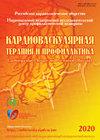创建生物样本临床摘要的具体内容
Q3 Social Sciences
引用次数: 0
摘要
生物库是有助于克服研究可重复性低这一问题的一项技术,它涉及在各个阶段保持严格的质量标准。除了生物样本的数据(关于采样、运输、制备和后续储存的详细记录)外,其中一个关键点是提供关于捐献者(患者)的信息。本文旨在分析生物样本临床摘要的创建情况,将来自不同生物库的数据结合起来,并评估电子病历和其他现代技术在这方面的可能性。在 PUBMED、eLIBRARY.RU 和 RSCI 数据库中搜索了相关出版物。创建临床描述的一种方法是由受过专门培训的员工有针对性地收集信息。主要信息通常取自研究参与者的个人记录,这些记录是在计划工作时编制和批准的。另一种方法是使用电子病历和其他文件,在对患者进行评估和治疗的过程中收集信息。还有一些混合类型的临床数据收集,英国生物库就是一个典型的例子。完整性、结构性和标准化是与生物样本相关的临床描述的基本特征。目前正在制定各种标准,以统一临床描述,使生物库和收集的数据更便于外部研究人员和组织使用,这对于合作和更有效地使用存储的生物样本是非常必要的。不同生物库之间临床描述方法的统一为个性化医学和转化医学领域的大规模研究开辟了广阔的前景。本文章由计算机程序翻译,如有差异,请以英文原文为准。
Specifics of creating clinical abstract of biospecimens
One technology that helps overcome the problem of low research reproducibility is biobanking, which involves maintaining strict quality standards at all stages. In addition to data on the biosample (detailed documentation on sampling, transportation, preparation and subsequent storage), one of the key points is the availability of information about the donor (patient). The aim of this article was to analyze creating clinical abstract of biospecimens, combining data from various biobanks and assessing the possibilities of electronic medical records and other modern technologies for this. The search for publications was carried out in the PUBMED, eLIBRARY.RU, RSCI databases. One approach to creating a clinical description is the targeted collection of information by a specially trained employee. Primary information is most often taken from the individual records of the study participant, which are developed and approved when planning work. An alternative method is the use of electronic medical records and other documents that collect information during the assessment and treatment of patients. There are also mixed types of clinical data collection, a prime example of which is the UK Biobank. Completeness, structure, and standardization are essential characteristics of clinical description associated with biospecimens. Various standards are currently being developed to unify clinical description, making biobanks and collections more available to external researchers and organizations, which is necessary for collaboration and more efficient use of stored biospecimens. Harmonization of clinical description methodology between different biobanks open up broad boundaries for large- scale research within personalized and translational medicine.
求助全文
通过发布文献求助,成功后即可免费获取论文全文。
去求助
来源期刊

Cardiovascular Therapy and Prevention
Medicine-Cardiology and Cardiovascular Medicine
CiteScore
1.70
自引率
0.00%
发文量
155
审稿时长
6-12 weeks
期刊介绍:
The most important objectives of the journal are: the generalization of scientific and practical achievements in the field of cardiology, increasing scientific and practical skills of cardiologists.
The scientific concept of publication does the publication of modern achievements in the field of epidemiology, prevention and treatment of cardiovascular diseases, the results of research, national and international clinical trials.
For publication in the journal are invited both domestic and foreign scientists and clinicians working in the field of cardiology, as well as doctors of other specialties.
The magazine covers various issues in cardiology and related specialties. Each issue is prepared by Executive editor of the issue, a respected specialist in the field of epidemiology, prevention and treatment of cardiovascular diseases.
The main focus of the publication — scientific articles on original research, the pharmacotherapy of cardiovascular disease, new diagnostic methods.
All members of the group of authors should meet all four criteria of authorship set forth in the ICMJE recommendations: 1) concept and design development or data analysis and interpretation, and 2) manuscript justification or verification of critical intellectual content, and 3) final approval for publication of the manuscript, and 4) consent to be responsible for all aspects of the work, and assume that issues relating to the thoroughness and diligent execution of any part of the study submitted are duly investigated and resolved.
Great importance the editors attached to the preparation of scientific papers by groups of authors at a high level, literacy, authors, and their ownership information, availability of research results not only to colleagues in Russia, but also abroad.
 求助内容:
求助内容: 应助结果提醒方式:
应助结果提醒方式:


